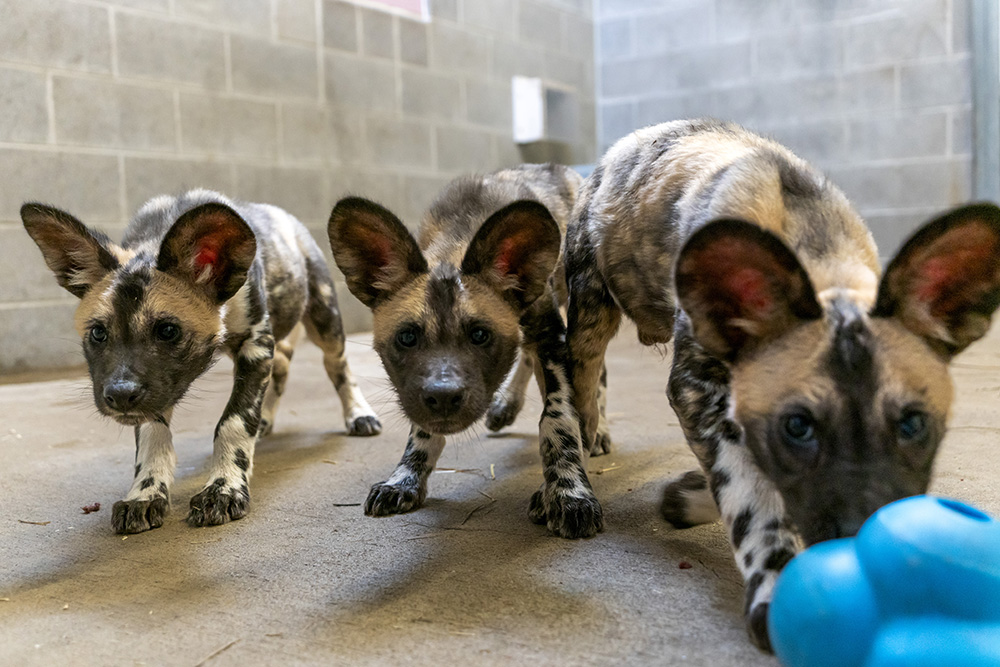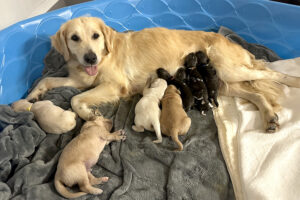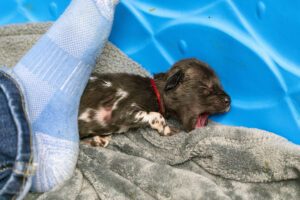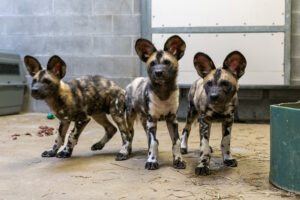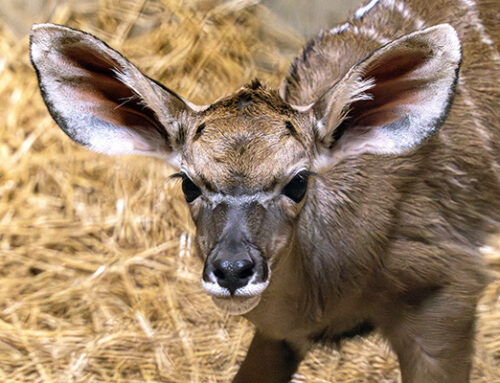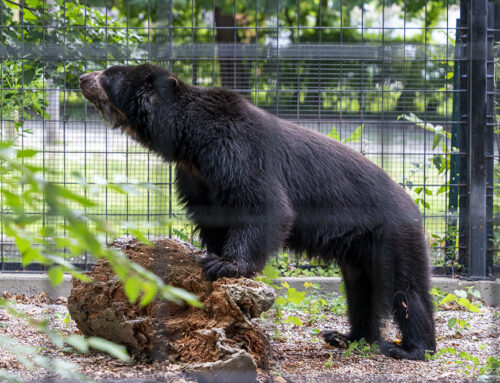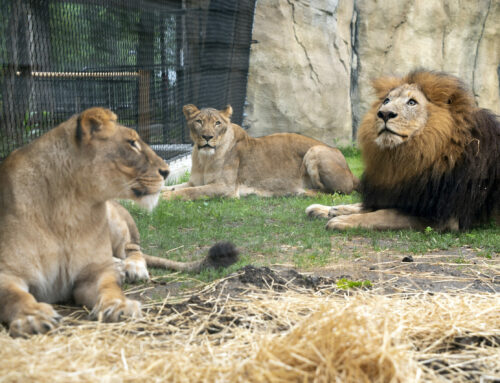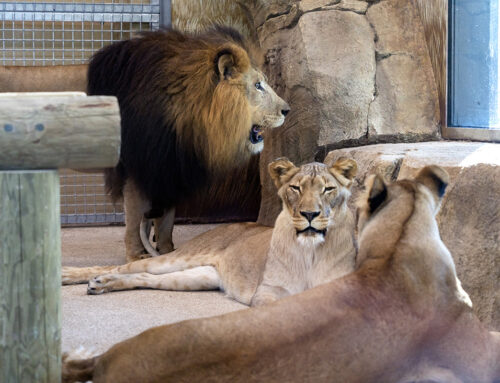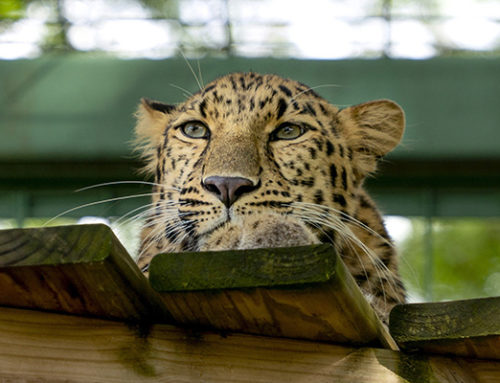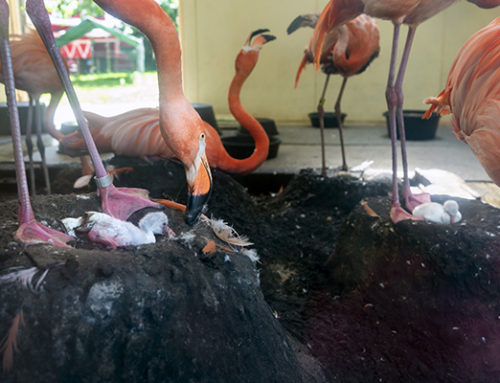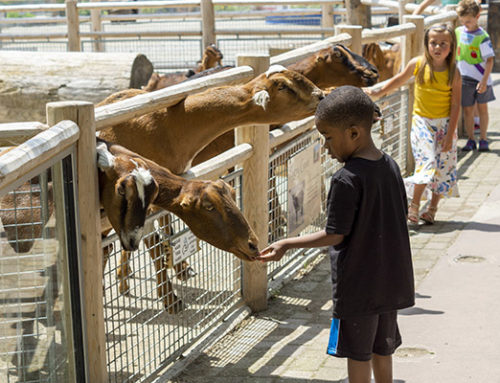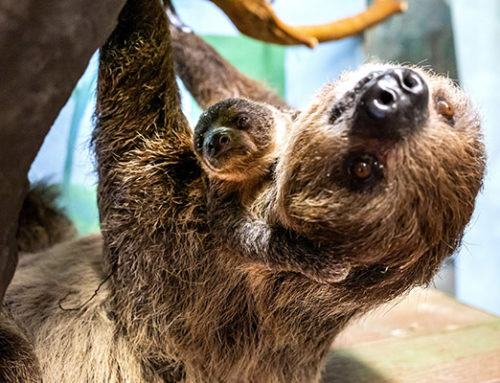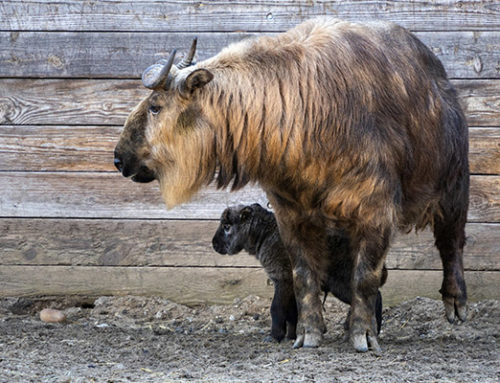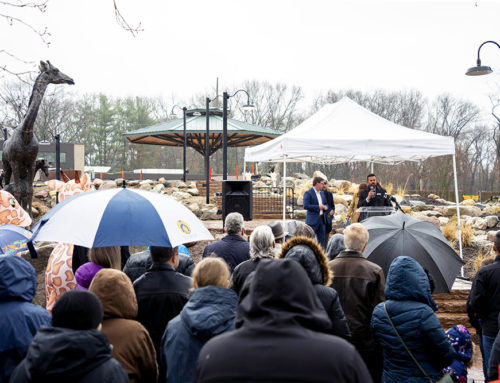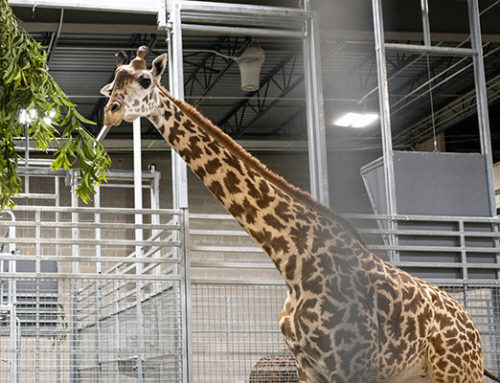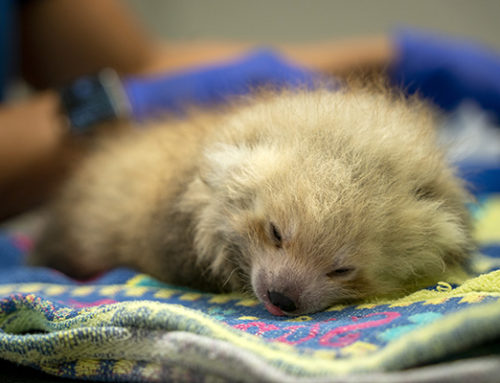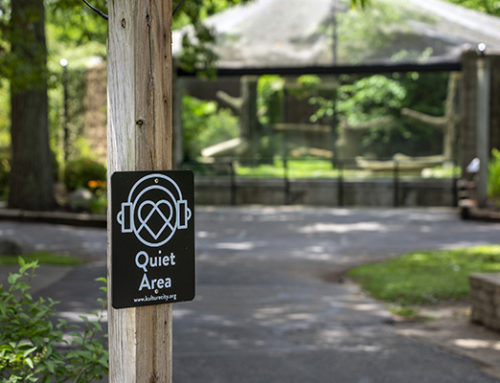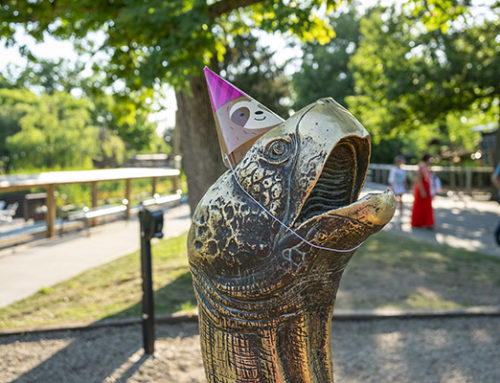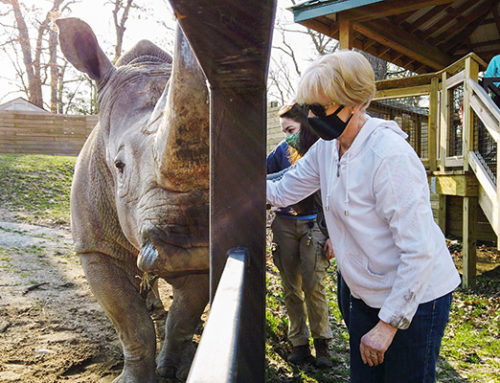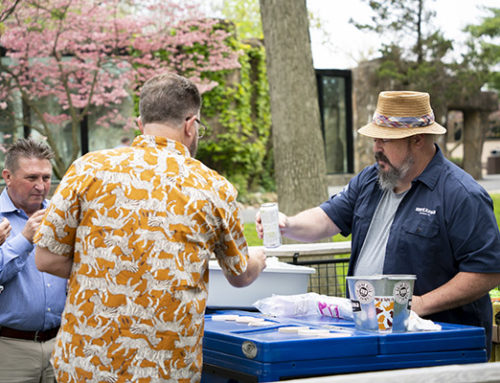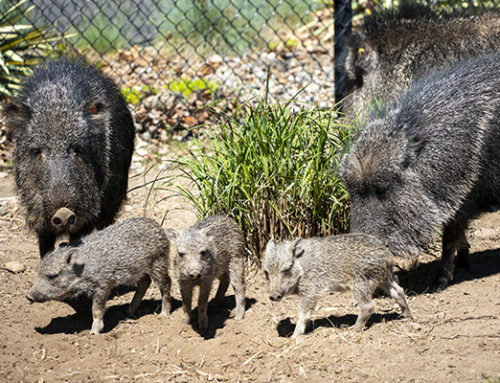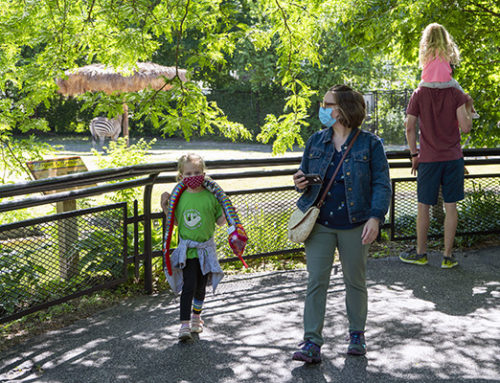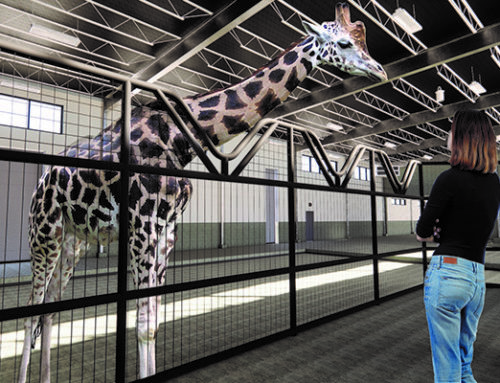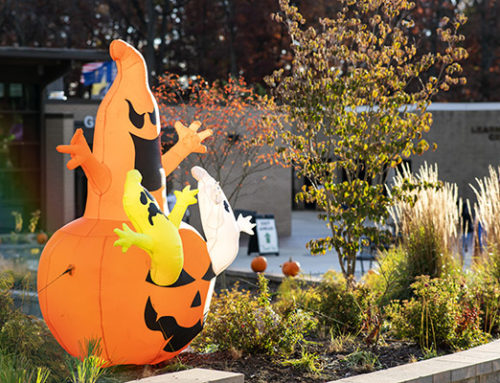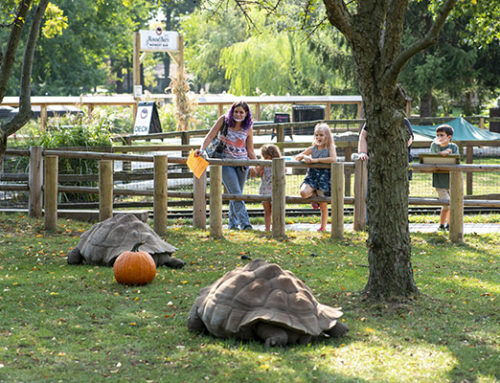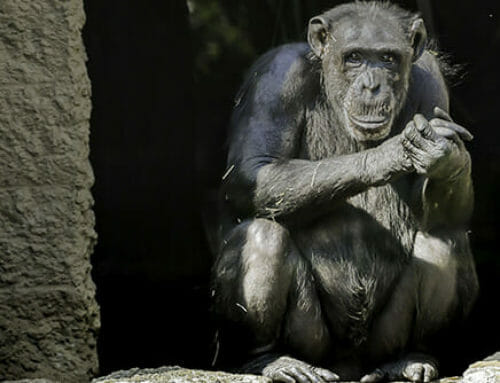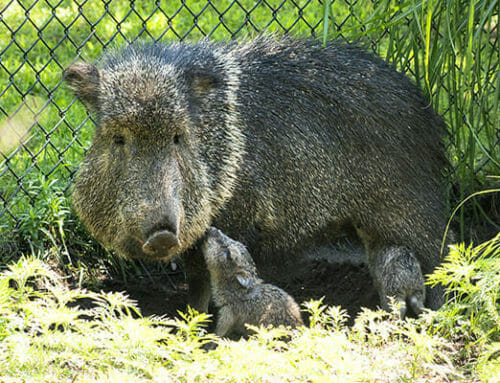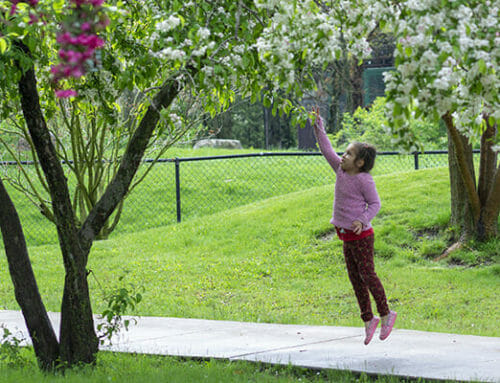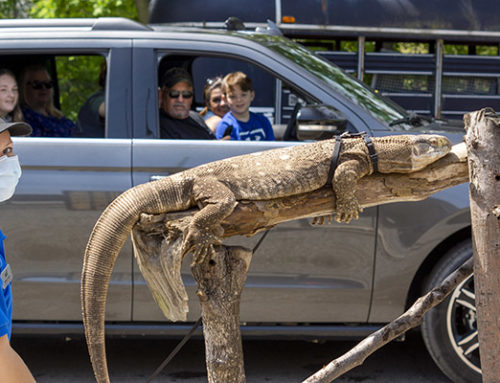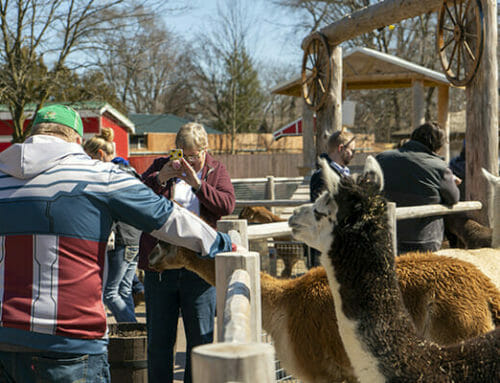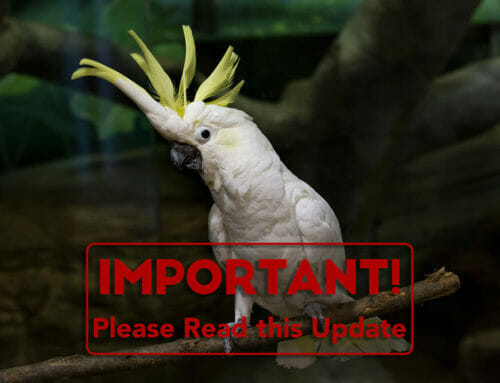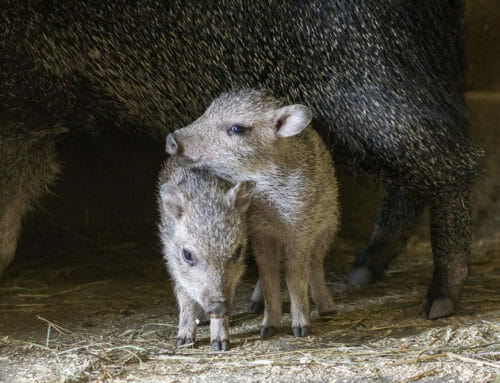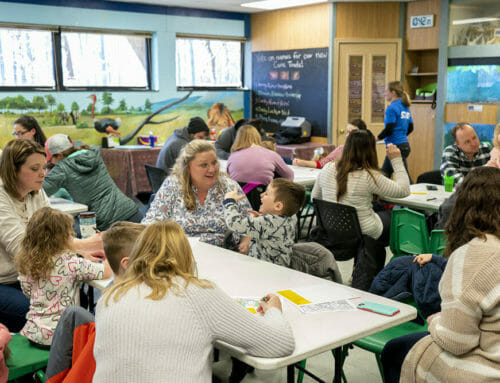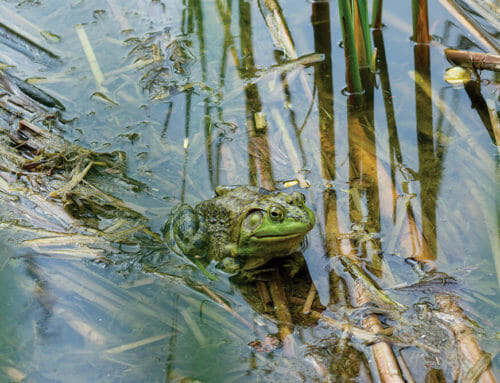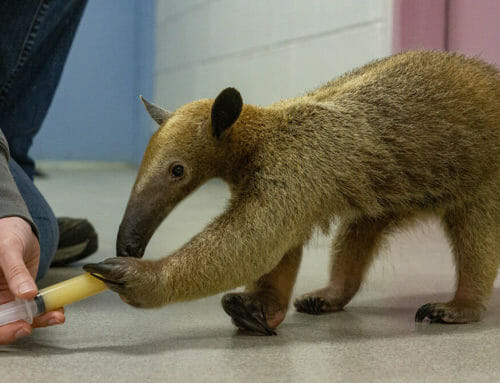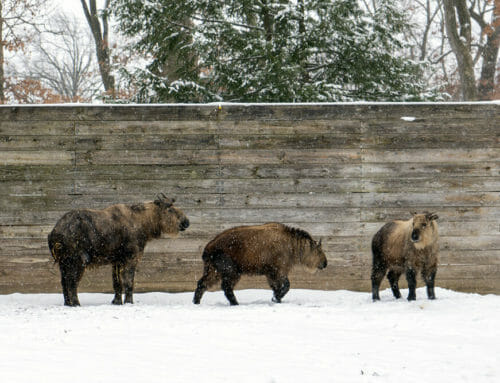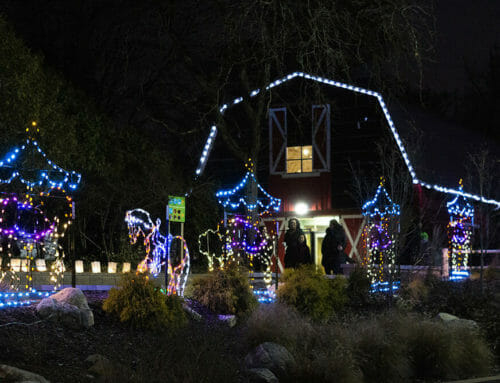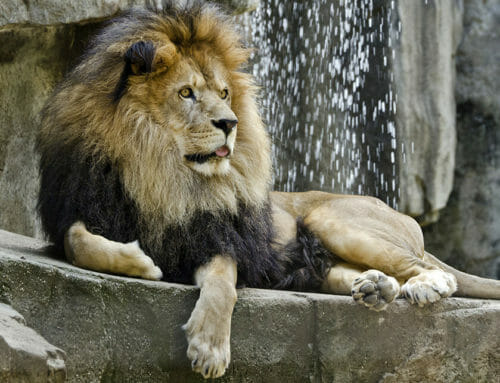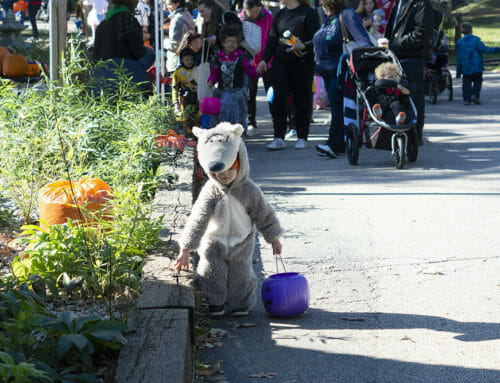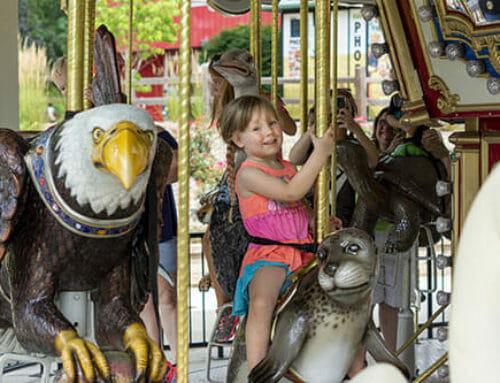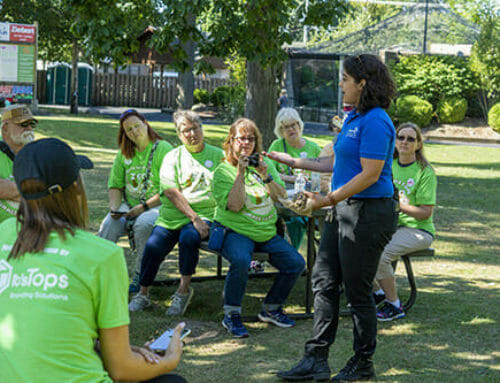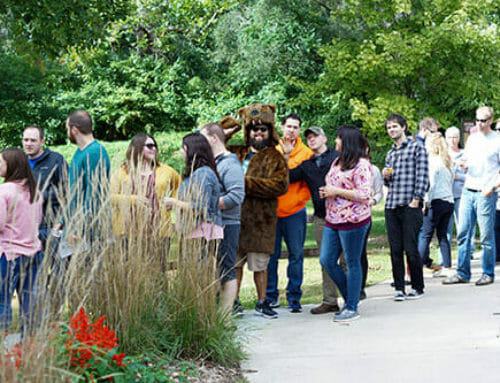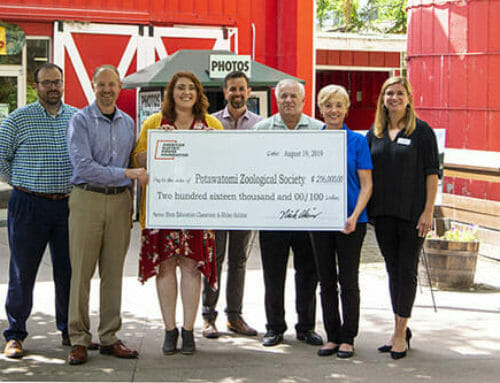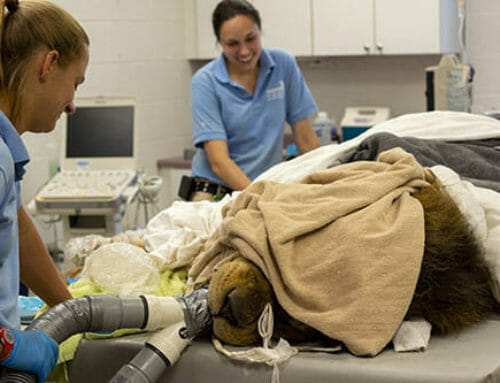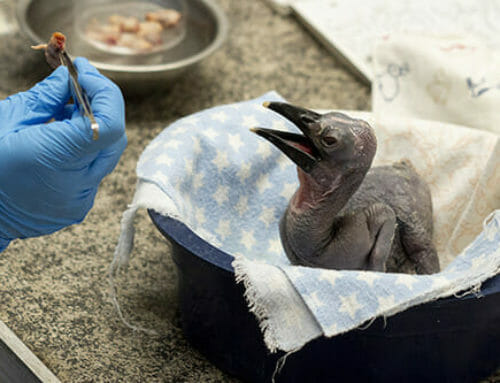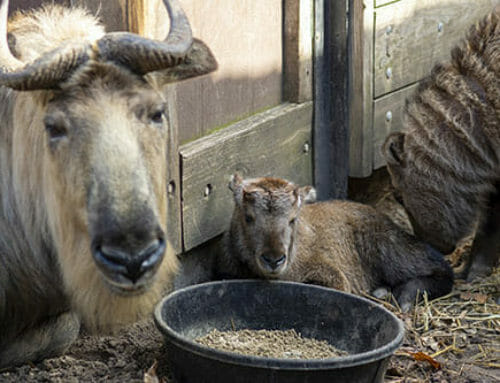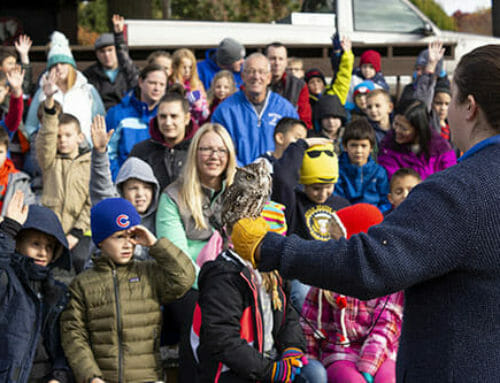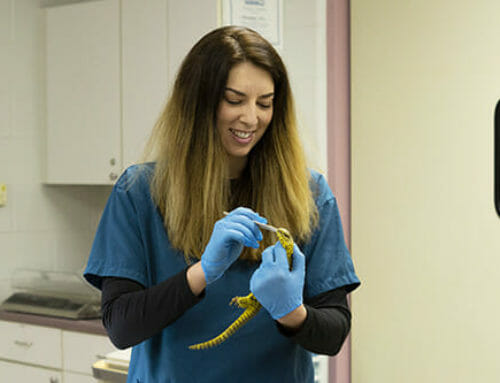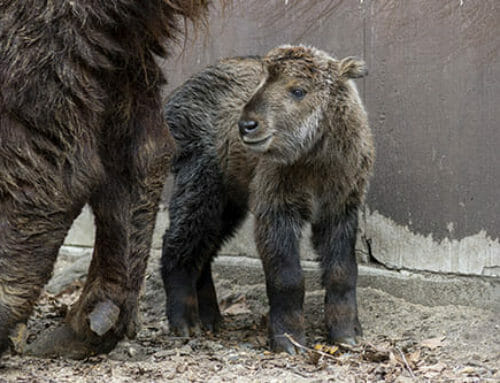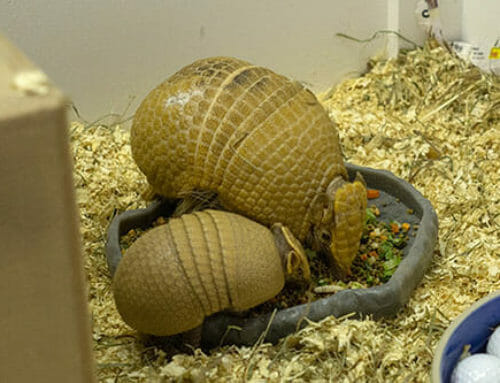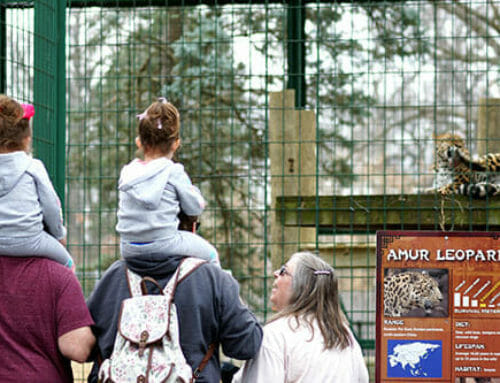Watch video of the pups on YouTube!
The Potawatomi Zoo is proud to introduce its youngest residents: three endangered African painted dog pups, born at the Zoo on September 28, 2023. The pups are living behind the scenes, but they may be visible to the public soon.
The unnamed painted dog pups, currently identified as Blue, Red, and Orange for the colors the staff have used to track them since birth, were born to mother Bleu and father Maurice. The Zoo also has a third adult painted dog, Colby, who is Bleu’s sister.
Blue, Red, and Orange have had an unusual and challenging start to life, but the Zoo hopes they will have a bright and successful future.
From the start, animal care staff had carefully tracked Bleu’s pregnancy, and, via remote cameras, they were able to watch the birth. Bleu originally gave birth to eight puppies.
Staff continued to observe the pack interactions after the pups were born to ensure that the pack dynamics were optimal for successfully raising the litter.
In the wild, African painted dogs live in large packs with unique social dynamics and vocalizations. The success of a litter depends on the entire pack, as all adult dogs help to feed and raise the pups. The success of the birth and the likelihood of raising live puppies can be jeopardized if the pack doesn’t work together as they should.
In zoos, animal care staff try to remain as hands-off as possible to ensure that the painted dog pack is able to raise their litter of pups. This strategy has been proven through numerous successful births in zoos around the world, and it gives painted dog puppies the best chance to learn the complex social structure of their species. The goal is for each litter to successfully integrate into a pack and contribute to future breeding programs within zoos.
Within 12 hours of the puppies’ birth at the Potawatomi Zoo, the Animal Care team could tell that the pack would not be able to successfully raise the puppies. Bleu, an inexperienced mother, was not caring for her pups the way she should have, and Maurice was following her lead.
Animal care staff consulted with the African Painted Dog Species Survival Plan (SSP), a group of zoo professionals who determine the breeding plans for this species in accredited zoos across the United States, on how to proceed. The difficult decision was made to intervene and hand-raise the litter of puppies.
Because it is so important for painted dog pups to be raised in a canine social structure, the Painted Dog SSP recommended finding a surrogate domestic dog to nurse the pups instead of bottle-feeding them. With the help of the Indiana Council for Animal Welfare, it only took a few hours for the zoo and animal care community to connect the Zoo with a golden retriever female named Kassy who had a new litter of puppies and milk to share.
Kassy and her puppies arrived at the Zoo the day after the painted dog puppies were born. Kassy immediately accepted the painted dog puppies and began to nurse and care for them like they were her own.
Over their first four weeks of life, successfully raising the painted dog pups came with difficulties and disappointments. The Zoo’s veterinarian, General Curator, and Animal Care team worked 24 hours a day to ensure that all of the puppies, including the golden retrievers, were getting enough food and time with Kassy. As is common with baby animals, some of the of the painted dog pups weren’t strong enough to survive, despite the dedicated attention Kassy and the Zoo staff gave them, but three did.
Originally, the recommended plan was for the painted dog pups to reintegrate with Bleu, Maurice, and Colby. However, the adult painted dogs didn’t display suitable positive interest in the puppies, so the plan was changed.
Right now, the Zoo is working to build a home for Blue, Red, and Orange next to Bleu, Maurice, and Colby so they can learn how to behave like painted dogs. Continuing to grow up near their family will help instill natural painted dog behaviors.
Once the pups are older, they can either be integrated with the Potawatomi Zoo pack or moved to another AZA-accredited facility where they will hopefully raise families of their own.
It has been an emotionally exhausting and challenging journey for the team, but it is the Zoo’s mission to work toward the preservation of wild species. Sometimes the journey is smooth and sometimes it takes extraordinary measures. These three healthy, active pups are just the start of this story, and the Zoo hopes to share more positive updates of their milestones in the future.
###
African painted dogs, also known as African wild dogs or African painted wolves, are a unique canid species (Lycaon pictus) native to sub-Saharan Africa. There are fewer than 7,000 adult painted dogs in the wild. Their overall population is declining, and they are considered endangered due to human-wildlife conflict, habitat fragmentation, and disease.
Painted dogs live in large family groups with strong social bonds led by a dominant male and female.
The pack hunts their preferred prey—antelope and other ungulates—through pursuit stamina and cooperation. Unlike most African predators, they hunt during the day. More than 60% of their hunts end in success, making them Africa’s most successful hunters. They’re known to use complex vocalizations to coordinate hunts and communicate with other members of their pack.
Only the dominant female in the pack produces puppies. Painted dog gestation is 69 to 73 days, and painted dog females typically breed every 12-14 months in the wild. Litters may be as many as 16 pups.



